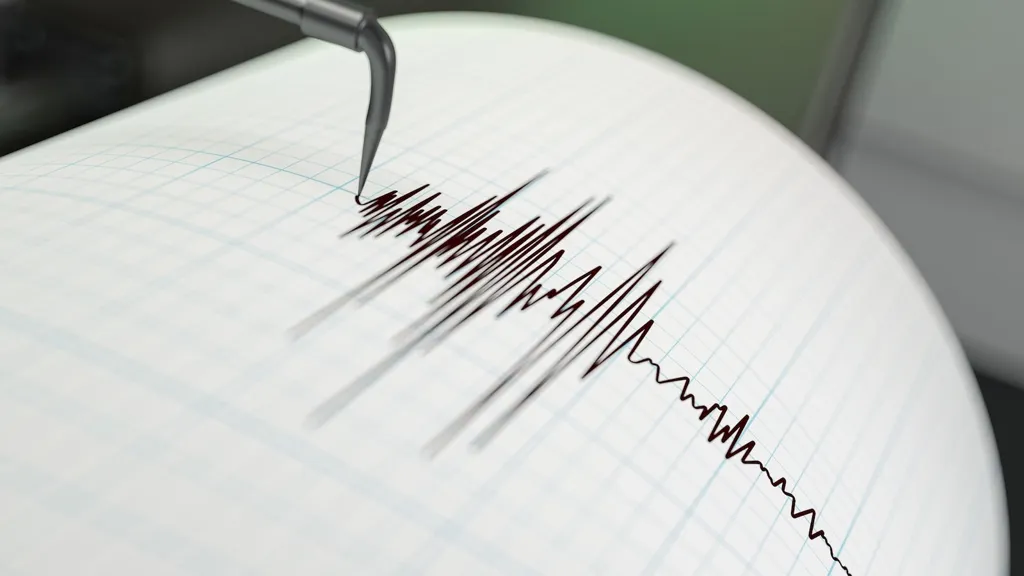Two minor earthquakes in the New York metro area occurred this week.
The recent, small earthquakes that rattled the New York metro area serve as a reminder that seismic activity does occur in the region, according to experts, who say it's actually quite common.
Two minor earthquakes with an epicenter in Bergen County, New Jersey, occurred within just days of each other, according to the U.S. Geological Survey. On Tuesday, a magnitude 2.7 earthquake struck in Hillsdale, while a magnitude 3.0 quake centered northeast of Hasbrouck Heights shook the region on Saturday.
The earthquakes caused a flurry of reaction from unsuspecting residents across the most densely populated region in the U.S., who raced to social media to compare experiences.
But seismic activity is quite common in the region, even if the earthquakes are not as frequent or strong as the ones that occur on the West Coast, experts told ABC News.
Hundreds of small earthquakes have occurred in the Northeast over the past year, Alexander Gates, a geologist at Rutgers University, told ABC News.
However, scientists don't expect the general rate of earthquakes in the region to change, as the mechanisms that lead to earthquakes tend to be constant, Oliver Boyd, a research geophysicist at the USGS, told ABC News.
"The push from the plate boundaries, the mantle, the convection, the topography ... those forces are relatively constant," he said. "Overall, we don't necessarily expect the rate of earthquakes to change."
Earthquakes in the Western U.S. tend to occur much more frequently and measure stronger than those in the Central and Eastern U.S., the experts said.
California is located at the boundary of the North American and Pacific tectonic plates, Boyd said. "A lot" of strain and stress happens at plate boundaries, which causes the earthquakes to be stronger, he added.
About 90% of earthquake activity happens at plate boundaries, Michael Steckler, a geophysicist and research professor at Columbia University's Lamont Doherty Earth Observatory, told ABC News.
New Jersey is in the middle of the North American plate, where the stresses "aren't as great," Boyd said. The interiors of the plates are much more stable, leading to fewer earthquakes, Steckler said.
"The hazard is definitely a lot higher in the Western U.S. because the rate of earthquakes is much higher," Boyd said.
In addition, the earthquakes that occur in the Northeast are "very shallow," compared to the "deep" earthquakes in the West, Gates said.
"A lot of times, people will say they actually heard the earthquake, and that's true," Gates said. "...Because they're so shallow here, especially in New Jersey, everyone hears the noise."
Much more is known about earthquakes in the West due to the accessibility of the San Andreas Fault, Boyd said. Geologists are able to measure various aspects of deformation along the fault and gather valuable data on the earthquake activity.
However, the earthquakes that occur in the New Jersey region tend to be more far-reaching from the epicenter, the experts said. The Earth's crust there is older than in California, but it's also colder and less fractured since it's not near a plate boundary.
"When an earthquake does happen, it's felt over a much wider area, whereas in California all the faults breaking things up means that seismic energy doesn't go very far," Steckler said.
It is not out of the realm of possibility that strong earthquakes can occur in the Northeast.
In 2011, an earthquake near Mineral, Virginia, measured at 5.8 on the Richter scale. And in 1811, earthquakes in the upper Mississippi Embayment in what is now New Madrid, Missouri, measured between magnitude 7 and 8, Boyd said.
An earthquake that struck Charleston, South Carolina, in 1886 measured at a magnitude 7.0, according to the USGS.
"There's the potential for a damaging earthquake to occur in the Eastern U.S., but it's pretty rare -- every 100 or 200 years," Boyd said.
Faults that have been mapped in the Central and Eastern U.S. are "many, many millions of years old" -- many produced during the Mesozoic era, Boyd said.
Those faults have had time to heal. And while some earthquakes may be originating from them, new cracks have likely been forming,Stecklersaid.
Regions in the upper Mississippi embayment are probably reactivating older faults that formed when the rift basin was formed,Boydsaid. In New Jersey, some of the faults from the Mesozoic rifting could be reactivating,headded.
"When stress builds up, if there's a pre-existing weakness, the Earth will use it,"Stecklersaid."So,it will use older faults when it can."
Earthquakes in the Northeast tend to be active for a short period of time before the activity shifts to another area,Gatessaid.
"These faults get active for a year,and then they go dead,"hesaid,addingthat it could be 50-100 years before they become active again.
But since the earthquakes in the region don't tend to rupture to the surface,researchers can't pinpoint exactly where the faults they are occurring are,Boydsaid.
Gatesbelieves the region is amid peak activity of a 40-year cycle and that an uptick of activity will likely continue for another couple of years.
"Within a couple of years,we'll start getting less and less,and then there’ll be a period where we won’t get many earthquakes at all,"Gatessaid.
